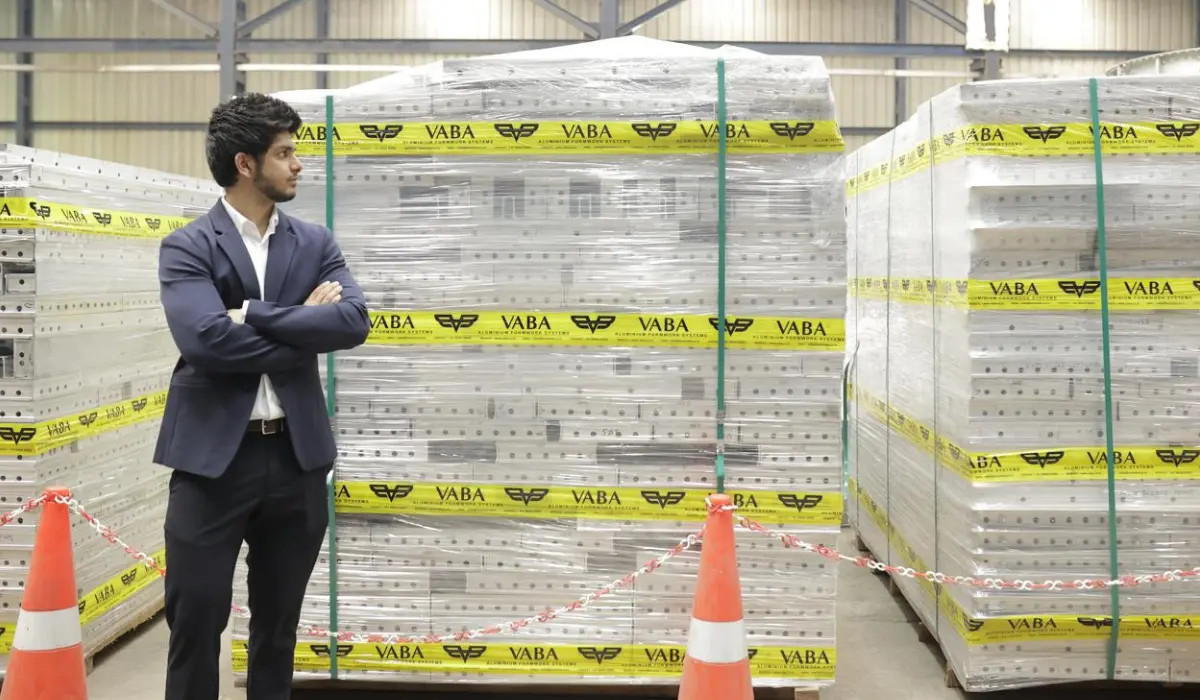
As the country is moving forward, we can see more and more mega projects coming up. The construction of modern high-rise buildings isn’t only limited to the metro cities these days. Even in the semi-urban areas, contractors and builders are taking up projects to construct large buildings. This also has made it quite important that the construction of these buildings are not only quick, but also durable, and efficient. Aluminium formwork has actually emerged as a game changer in these times. This construction method, initially developed in the late 20th century, has become a cornerstone in modern high-rise construction due to its numerous benefits. Here in this article, we’re going to walk you through the impacts of aluminium formwork in modern high-rise buildings. So, buckle up, and let us dive straight into the world of construction.
Understanding Aluminium Formwork in Construction
In construction, the formwork is the temporary mould where they pour concrete. Traditional formwork is often built of materials like wood, timber, or steel. However, if you consider the current trend, aluminium formwork companies in India are changing the scenario rapidly by offering high-quality aluminium formwork for construction projects.
The aluminium formwork systems are made of lightweight, durable, and high-grade aluminium alloys. The system comprises of prefabricated modules that are quite easy to assemble or even disassemble. This makes aluminium formwork projects a perfect fit to meet the specific requirements of the different construction projects. So, let’s now check out the benefits of using aluminium formwork for high-rise constructions.
The Role of Aluminium Formwork in Modern High-Rise Construction
- Speed and Efficiency : With the demanding nature of the construction industry, the builders try to finish projects as quickly as possible. With aluminium formwork, they can speed up the construction. Since this method uses lightweight materials, these can be handled easily by the construction workers and can be installed quickly without the need for heavy machinery. This simple assembling and disassembling process reduces the labour time significantly. On top of this, the panels are designed with precision in terms of quality and alignment. This eliminates the need of extensive adjustments or rework. This makes the construction process effectively streamlined, reducing the construction time by almost 30% compared to traditional formwork methods.
- Durability and Sustainability : While wooden formwork systems can rot or degrade over time, the aluminium formwork systems stand tall and sturdy for a long, long time. In fact, aluminium formwork is known for durability and longevity, which is essential for modern high-rise buildings. A well-maintained aluminium formwork system can be reused for up to 300 times, which significantly lowers material costs and reduces waste. The high-rise construction projects require a high volume of materials, which makes it important for builders to use aluminium formwork systems, as they’re quite reusable. Since you can reuse the aluminium formwork for multiple high-rise projects, it improves cost-efficiency by a significant margin.
- Quality and Precision : The aluminium formwork systems are precision-engineered, which means that for high-rise constructions, they can improve the constructional efficiency by a mile. These panels can create uniform and smooth concrete surfaces, eliminating the need for final touch-ups or finishing. For high-rise buildings, this precision is highly appreciated as even a minor deviation can lead to serious structural problems in such projects. The panels ensure that the concrete is evenly distributed and compacted, making the buildings structurally sound and sturdy. You can’t find this much quality in traditional formwork systems, which can be susceptible to human errors and inconsistencies.
- Cost Considerations : Now, you must have noticed that the initial cost of aluminium formwork is indeed higher than traditional formwork systems. However, this isn’t the final picture. The long-term cost benefits of the aluminium construction projects are substantial. From the fact that it can reduce the labour costs for high-rise constructions to the fact that it can also reduce the material costs by reducing the need for replacements – aluminium formwork systems offer a cost-effective solution to high-rise construction.
- Future Prospects of Aluminium Formwork : The popularity of aluminium formwork systems in modern high-rise constructions is quite high already, and it looks like the only way is up. As the construction industry continues to evolve, the scope of aluminium formwork will continue to grow. Since the demand for high-rise constructions is rising as well, the necessity of aluminium formwork systems is also growing. Very few construction techniques can meet the demands of modern constructions like aluminium formwork. Until we have a better option at our disposal, the aluminium formwork systems are going to dominate the construction industry for a long time.
Conclusion
The construction industry has benefitted massively from aluminium formwork systems. This benefit also transcends to high-rise constructions. Imagine having a construction method that offers durability and speed of construction all while actually saving you money! The role of aluminium formwork systems cannot be overstated in shaping the skylines with modern high-rise constructions.